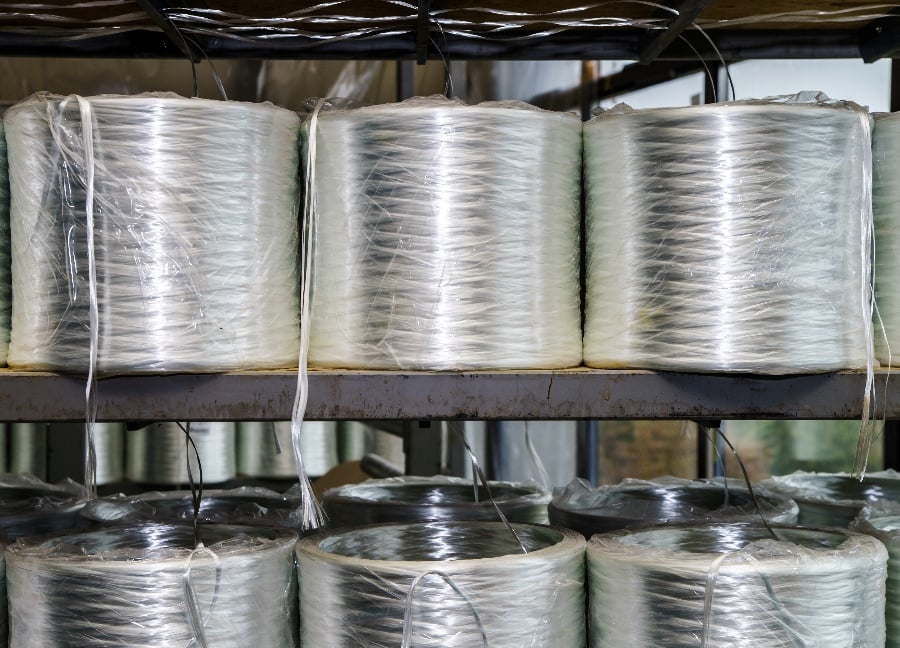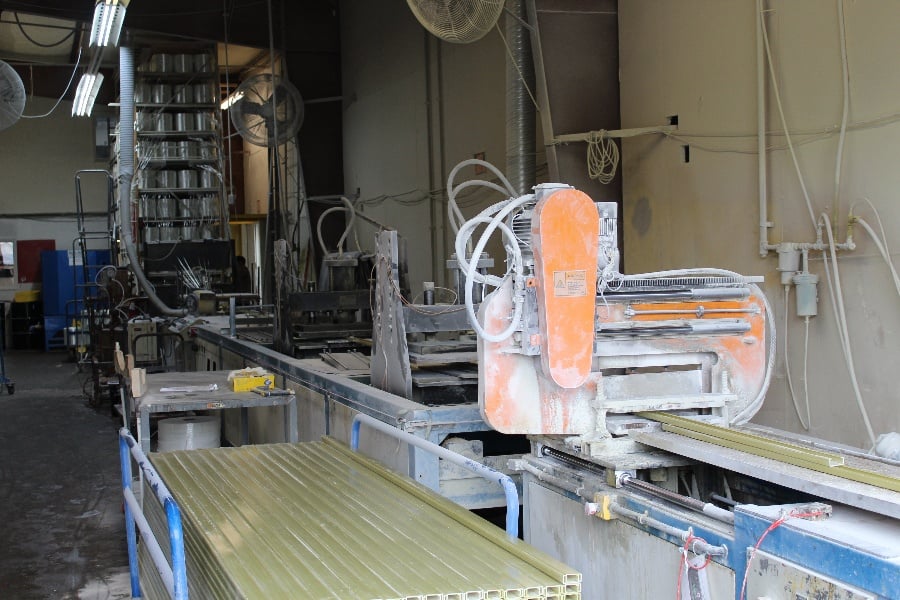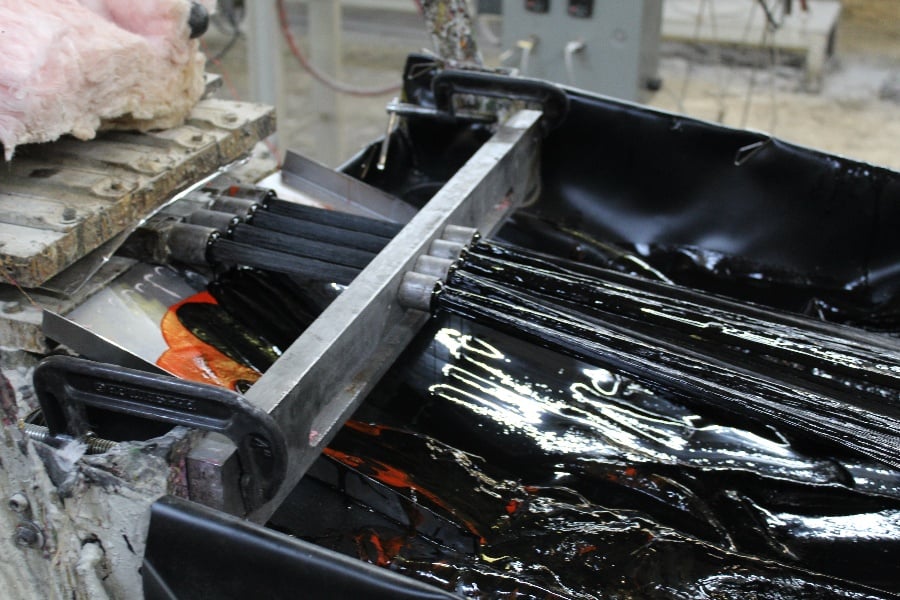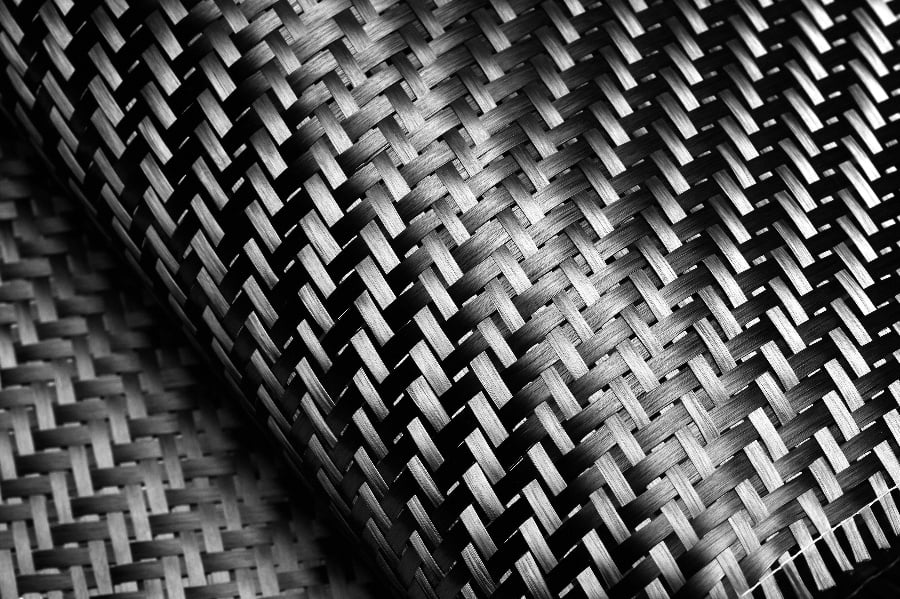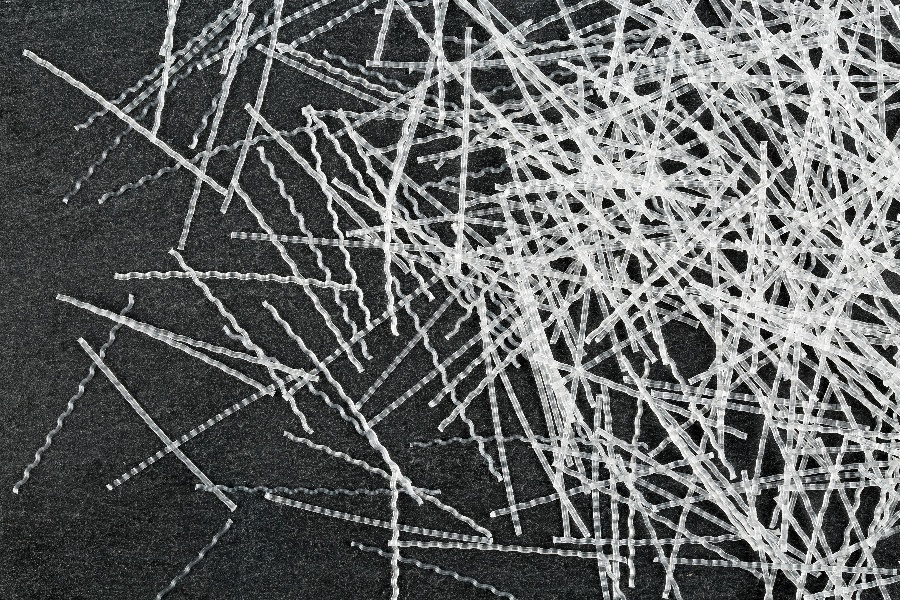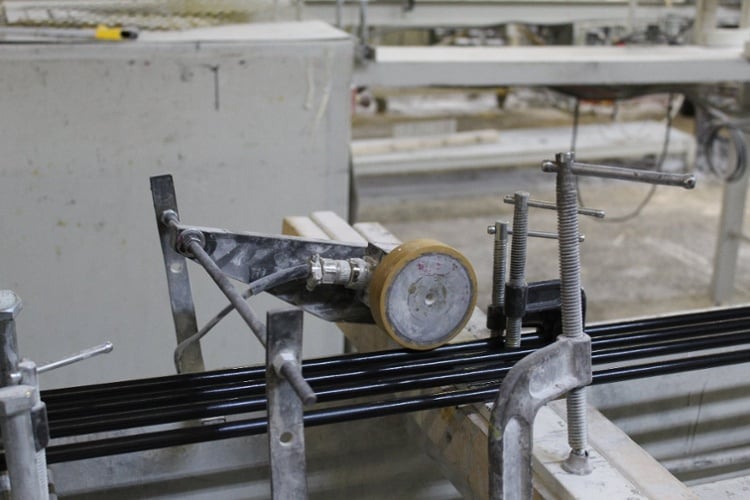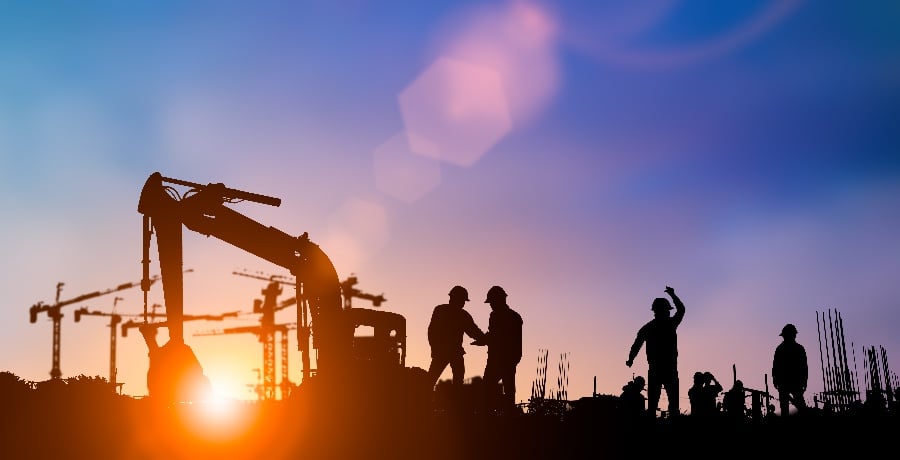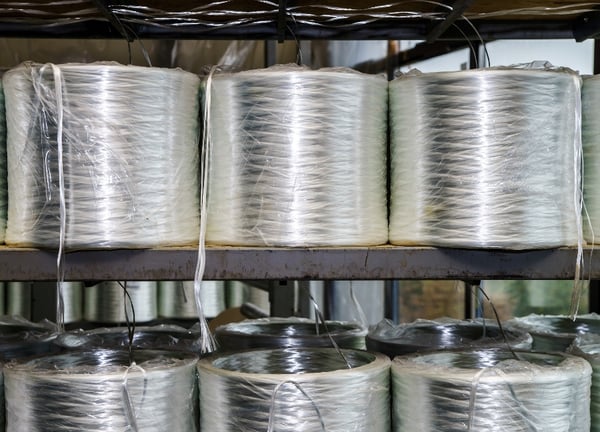
Pultruded products are electrically non-conductive for materials such as metal. FRPs also have a low thermal conductivity which means that heat transfer occurs at a lower rate. This results in a more comfortable product surface when physical contact occurs.
Offering non-conductive materials across all industries is one of the key features that makes pultruded fiberglass products stand out on the market. Also called fiber-reinforced polymers, FRPs can handle the heat from electrical or natural sources.
To create pultruded products, bundles of carbon, aramid, or glass fiber rovings are pulled through a resin bath. This process reinforces the polymer fibers and creates thermal-resistant, high-performance materials that can last for up to 15 years with little to no maintenance.
During the manufacturing process, the fiber rovings are also injected with resin to further reinforce them. Cast and then cured into the desired size and shape, the resulting material is extremely lightweight and easy to install.
As a superior alternative to wood, concrete, aluminum, and even steel, fiber-reinforced polymer (FRP) products are safer due to their high heat-resistance.
For the last 22 years, Tencom has been working hard at developing safe, durable pultruded products for commercial and residential construction. To find out more about pultrusion, click here.
Thermal-Resistant Materials
Heat-resistance and fire protection are two key factors in ensuring that commercial and residential buildings remain safe.
In order to make wood, concrete, and asphalt heat-resistant, a layer of protective coating must be applied. This is a type of chemical coating which is highly toxic to the environment and does not work the same way as FRP composites.
Pultruded products are resistant to high heat levels from the get-go. There is no need to add layers of toxic chemicals. As for metals such as aluminum and steel, they have a higher heat capacity than wood, but they are not completely heat-resistant. They can still melt at higher temperatures that can occur during a rampant fire.
How Are FRP Composites Thermal-Resistant?
It all comes down to the way fiber-reinforced polymer composites are created. The fiber rovings are fed into the pultrusion machine, keeping the strength level consistent throughout the entirety of the product.
A tension roller threads the material spools and reinforcements through the machine as well. This shapes the fiber-enforced polymer into a composite. The rovings then get pulled through the “wet-out” stage in which they are submerged in a liquid resin.
As the rovings soak, they will become impregnated by the resin, which will further improve the composition of the product. At this stage, various colors can be added by injecting pigments into the unfinished product.
Finally, the product will be cast and cured, which makes the composite resistant to impact, ultra-violet rays, corrosion, and heat.
FRP Composites vs Wood
The easiest comparison to make between a pultruded fiberglass product and a conventional building material would be to compare FRP composites to wood. Timber is highly flammable and burns up quickly without the proper chemical coatings to protect it.
Wood has been used in building projects seen mankind first learned how to cut down a tree. Over human history, it has served as a staple material for construction, but there are many downsides to using wood.
One of the biggest issues is how conductive it is. It is a heat-holding champion in a competition that favors non-conductive materials. For safety reasons, FRP composites are increasingly preferred over wood in construction projects.
Fiberglass-reinforced composites have an ultra-high Glass Transition Temperature (Tg) of about 575°F (302°C). As the highest-ranking Tg pultruded material ever tested, these FRP composites remain non-conductive, chemical-resistant, and corrosion-resistant at extremely high temperatures.
This means that if there is a fire inside the building, the support structures made out of FRP composite materials will not falter. They will hold strong under immense heat and pressure.
There is no need to add toxic chemical coatings to FRP composite pieces, and they require little to no maintenance.
Often seen as crossbars, poles, beams, posts, and other types of structural support pieces, pultruded fiberglass will help maintain the integrity of a building in the event of a fire. It can also help slow down the spread of that fire due to its heat-resistant properties.
FRP Composites vs Metals
When compared to aluminum or steel, FRP products are still your best bet. Non-conductive, corrosion-resistant, and up to 75% lighter than steel products, pultruded fiberglass materials provide extra safety without compromising on strength or rigidity.
Buildings require a lot (miles) of electrical wiring to bring power to every room and appliance. This can generate a lot of heat, especially in large corporate buildings. Heat coming from thermal or electrical sources will not damage or melt FRP composites like it does aluminum and steel.
Although metals are known for having a higher heat-tolerance than timber, they are still no match for pultruded products.
Having non-conductive properties isn’t only good for buildings. It’s also a great benefit in the automotive world. For decades, cars, trucks, and SUVs were made primarily from steel.
This made the vehicles overtly heavy and terrible on gas. It also wasn’t a good match for high-performance cars or fuel cell trucks. Looking for non-conductive, lightweight material, automotive engineers turned to fiberglass composites.
This heat-resistant material can be seen in the body of the famous Lamborghini. Sleek and lightweight, drivers don’t have to worry about things getting too hot under the hood while racing.
FRP composite materials are also used to create non-conductive hydrogen tanks for fuel cell trucks. This ensures the safety of the driver and other people on the roads in the event of an accident. Also with the higher tensile strength, the tank will be less likely to burst open on impact, which is another safety feature by itself.
With the ability to withstand extremely high temperatures while maintaining the integrity of the building, FRPs offer peace of mind and security that other products such as wood and metals simply do not.

